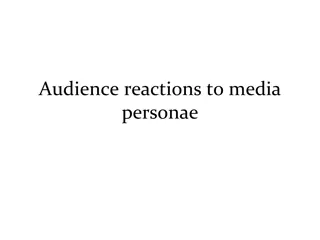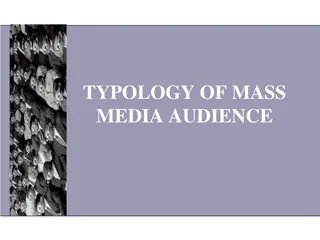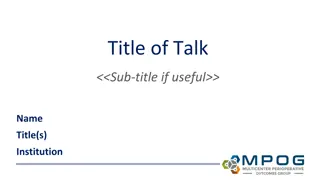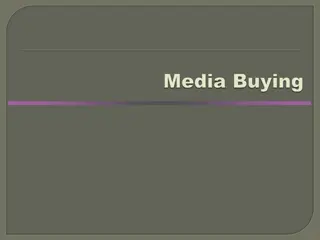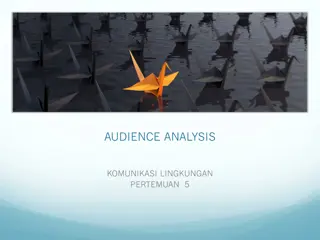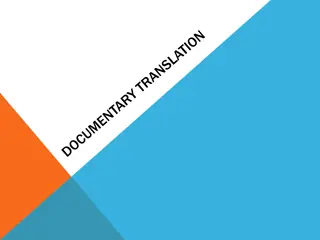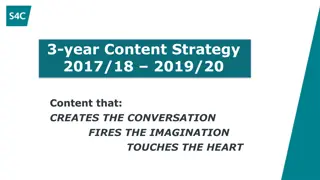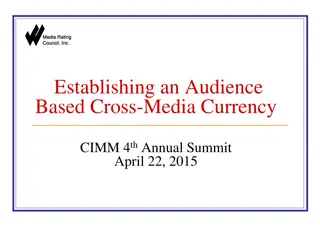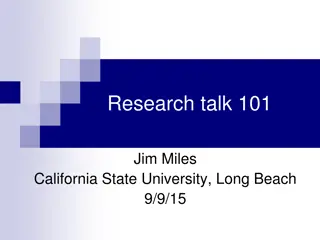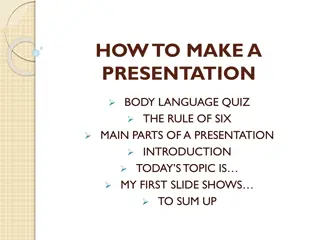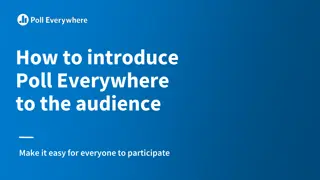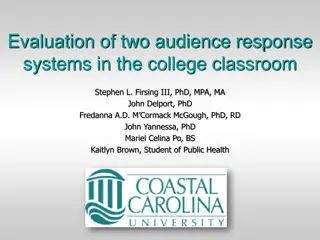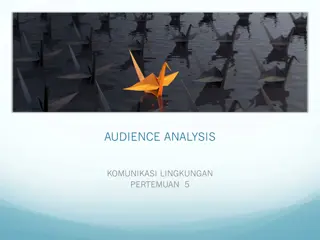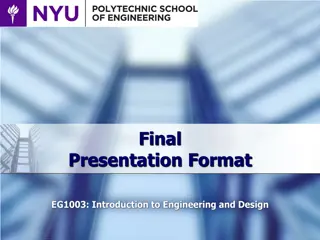
Audience Diversity in Enjoying Stranger Things
Explore how different audience groups could enjoy the show Stranger Things based on demographics, psychographics, and uses and gratifications. Dive into the marketing strategies, social media presence, fandom engagement, and nostalgia marketing targeting Millennials.
Download Presentation

Please find below an Image/Link to download the presentation.
The content on the website is provided AS IS for your information and personal use only. It may not be sold, licensed, or shared on other websites without obtaining consent from the author. If you encounter any issues during the download, it is possible that the publisher has removed the file from their server.
You are allowed to download the files provided on this website for personal or commercial use, subject to the condition that they are used lawfully. All files are the property of their respective owners.
The content on the website is provided AS IS for your information and personal use only. It may not be sold, licensed, or shared on other websites without obtaining consent from the author.
E N D
Presentation Transcript
Primary/secondary Audiences How many different audience groups could enjoy Stranger Things and why? Demographics Psychographic Uses and gratifications
Marketing Stranger Things Season 1 Trailer 1 | Rotten Tomatoes TV Check out the Stranger Things Season 1 trailer starring Millie Bobby Brown! Let us know what you think in the comments below. Learn more about this show on Rotten Tomatoes: https://www.rottentomatoes.com/tv/stranger_things/s01?cmp=RTYT_YouTube_Desc Twitch tie in Haunted Basement Cinematic trailer - VR - https://startvr.co/stranger- things-vr/ US Air Date: Jul 15, 2016 Starring: Millie Bobby Brown, Finn Wolfhard, Winona Ryder Network: Netflix Synopsis: A love letter to the '80s classics that captivated a generation, Stranger Things is set in 1983 Indiana, where a young boy vanishes into thin air. As friends, family and local police search for answers, they are drawn into an extraordinary mystery involving top-secret government experiments, terrifying supernatural forces and one very strange little girl. What to Watch Next: Certified Fresh TV: http://bit.ly/2FC8sQi Top Sci-Fi/Horror/Fantasy: http://bit.ly/2F0j76g TV Shows by Streaming Platform: http://bit.ly/2GKXHuv More Rotten Tomatoes: Subscribe to ROTTEN TOMATOES TV: http://bit.ly/2qTF6ZY Follow us on TWITTER: http://bit.ly/2mpschF Like us on FACEBOOK: http://bit.ly/2COySMI Follow us on INSTAGRAM: http://bit.ly/2FlxGC6 Rotten Tomatoes TV delivers Fresh TV at a click! Subscribe now for the best trailers, clips, sneak peeks, and binge guides for shows you love and the upcoming series and TV movies that should be on your radar.
Marketing Social Media https://www.facebook.com/ StrangerThingsTV/ https://twitter.com/Stranger _Things https://www.youtube.com/c hannel/UChmpTxQ0Gp8K EJKsqzeg9Lg https://www.instagram.com /strangerthingstv/?hl=en
Fandom and Merch https://strangerthings.fandom.co m/wiki/Stranger_Things_Wiki https://www.tumblr.com/tagged/s tranger-things https://www.fanfiction.net/tv/Stra nger-Things-2016/ https://www.deviantart.com/searc h?q=stranger%20things https://www.redbubble.com/shop/ stranger+things+fandom #justiceforbarb
Nostalgia Marketing Millenianls - Millennials, also known as Generation Y (or simply Gen Y), are the demographic cohort following Generation X and preceding Generation Z. Researchers and popular media use the early 1980s as starting birth years and the mid-1990s to early 2000s as ending birth years, with 1981 to 1996 a widely accepted definition. Millennials are sometimes referred to as "echo boomers" due to a major surge in birth rates in the 1980s and 1990s, and because millennials are often the children of the baby boomers. The characteristics of millennials vary by region and by individual, and the group experiences a variety of social and economic conditions, but they are generally marked by their coming of age in the Information Age, and are comfortable in their usage of digital technologies and social media.
violent behaviours are learned through modelling Humans learn much of their behaviour through social interaction. Social learning can occur as a result of first-hand experiences. Social learning can also occur by watching others experiences. Audiences can copy media representations of negative behaviour Representational modelling can have a powerful effect on the behaviours of media audiences. Modelled behaviours by role models and the vivid visual encoding systems of media products further concentrate the effects of representational modelling. Violence is an endemic feature of media content. effects1 Media modelling Bandura 2 Three theorists who might challenge Bandura s thinking: Stuart Hall: would argue that media products do not produce a cause and effect learning response audiences decode the media they engage with using contextual knowledge. Henry Jenkins: emphasises the positive effects of media consumption suggesting that the media forges communities and allows audiences to express themselves in positive and creative ways through fan engagement. Gerbner: would argue that the media should not be measured just in terms of its impact on individual learning behaviours but also on the cumulative effect of mass media consumption on wide social attitudes. ? A
Cultivation Theory1 A media products shape attitudes and perceptions of the world at large Storytelling performs an encutluration role helping to shape our attitudes and social values. Mass media has replaces other institutions, most notably religion and education as the principle constructor of symbolic storytelling. Television has had a homogenising effect on society we all watch or engage in the same symbolic stories as a result of mass media. Television schedules are saturated with violent content that cultivates a widespread fear in society mean world syndrome . The media can produce resonance or mainstreaming effects on audiences. Gerbner 2 media consumption leads audiences to accept established power structures and mainstream ideologies Mass media narrative create symbolic representations of power that affect our real-world view. Mass media products over-exaggerate the power and scope of real-world authorities. Mass media products marginalise alternative viewpoints as a result of middle-of-the-road reportage. Three theorists who challenge Gerbner s thinking: Stuart Hall: would argue that media products do not produce a cause and effect response audiences decode the media using contextual knowledge. Henry Jenkins: emphasises the positive effects of media consumption suggesting that the media forges communities and allows audiences to express themselves in positive and creative ways through fan engagement. Bandura: would argue that the media directly impacts and individual s behaviour and induces consumers to be violent. Gerbner, in contrast, suggest that media consumption prompts attitudinal rather than a behavioural response. ?
Reception Theory1 encoding and decoding Professional media encodes messages using visual and aural cues. Media encoding is affected by institutional context, media production processes and genre-driven routines. Media products are polysemic as a result of their use of visual signs. Audience do not necessarily decode meanings that media produces effect in a straightforward way. Audiences can misread products if they are too complex or untranslatable. Stuart Hall dominant, negotiated and oppositional readings Media products reinforce dominant ideologies and cultural hegemonies. Dominant ideologies are subject to change again, the media plays a crucial role in effecting those changes. Audience use situated logics to decode media messages. Audiences can produce reading of products that accept the dominant ideologies they construct. Audiences can use their contextual knowledge to read against the grain of a media product and to thus produce negotiated or oppositional decodings. Three theorists who might challenge Hall s thinking: Gerbner: would suggest that audiences find it difficult to resist the effects of media products. Gerbner s mainstreaming theory would suggest that even the least susceptible audience members experience attitudinal change as a result of media exposure. Bandura: his Bobo doll experiments would suggest that the media has a casual effect on audience behaviours and prompts audiences to copy behaviours they have seen in the media. Guantlett: would argue that media products do not necessarily reinforce cultural hegemonies. Contemporary media products offer a wide range of identities and subversions that often work in opposition to dominant ideologies. 2 ? A
Fandom1 fans appropriate media texts, producing readings that are not fully authorised by the media producers Jenkins suggest that audience are able to used professional texts as creative scaffolding on which they craft their own reading of products. Textual poaching can be used by marginalised fans to explore alternative readings to mainstream culture. Textual poaching in the digital age can take many forms, including fanfiction, remix culture, fan art or video parodies. 2 3 fans and media makers have converged as a result of digital technology Digital technologies have brought audiences and producers together. The digital revolution has expanded the scope of fandoms. Producers use their fans digital labour to promote and market media. Contemporary media producers deliberately construct material to engage fan interest. Jenkins: fans use participatory culture to effect wider social change Participatory culture is distinctly different from the commercial activities of Web 2.0. Participatory culture allows individual to share and develop ideas with like-minded community. Participatory culture can create social change. Three theorists who might challenge Jenkins s thinking: Curran and Seaton: argue that the internet is dominated by an oligopoly of commercial companies thus minimising the potential effect of participatory culture. Hesmondhalgh: might agree that the internet has resulted in audience-producer convergence, but would argue that the media industry is still heavily reliant upon traditional marketing activities to reduce product risk. Media makes might engage in fan-based listening activities to construct or adapt products, but formulaic product design (using stars/genre codes) remains a consistent focus of product content. Livingstone and Lunt: suggest that the global nature of the net and the volume of material uploaded make effective regulation very difficult. New technology might open up the media to democratising forces and the development of new communities, but it is also open to potential abuse. ? A
The end of audience1 A everybody makes the media Shirky highlights the revolutionary impact of digital technology in speeding up media production processes. Media consumption patterns have changed from a broadcast model that involves one sender and many recipients to a many-to-many model. Traditional media, Shirky argues, uses a filter then publish model to provide quality content. Shirky suggest that the internet has resulted in a publish now, filter later model due to lower production costs and reduced entry barriers to media production. everyday communities of practice Audiences actively shape their own rules of engagement with professional media products. Digital technologies have resulted in an explosion of what Shirky calls communities of practice . Clay Shirky: 2 Two theorists who might challenge Shirky s thinking: Curran and Seaton: argue that the internet continues to be dominated by an oligopoly of commercial companies. Hesmondhalgh: might agree that the internet has resulted in audience-producer convergence, but would argue that the media industry is still heavily reliant upon traditional marketing activities to reduce product risk. ?

